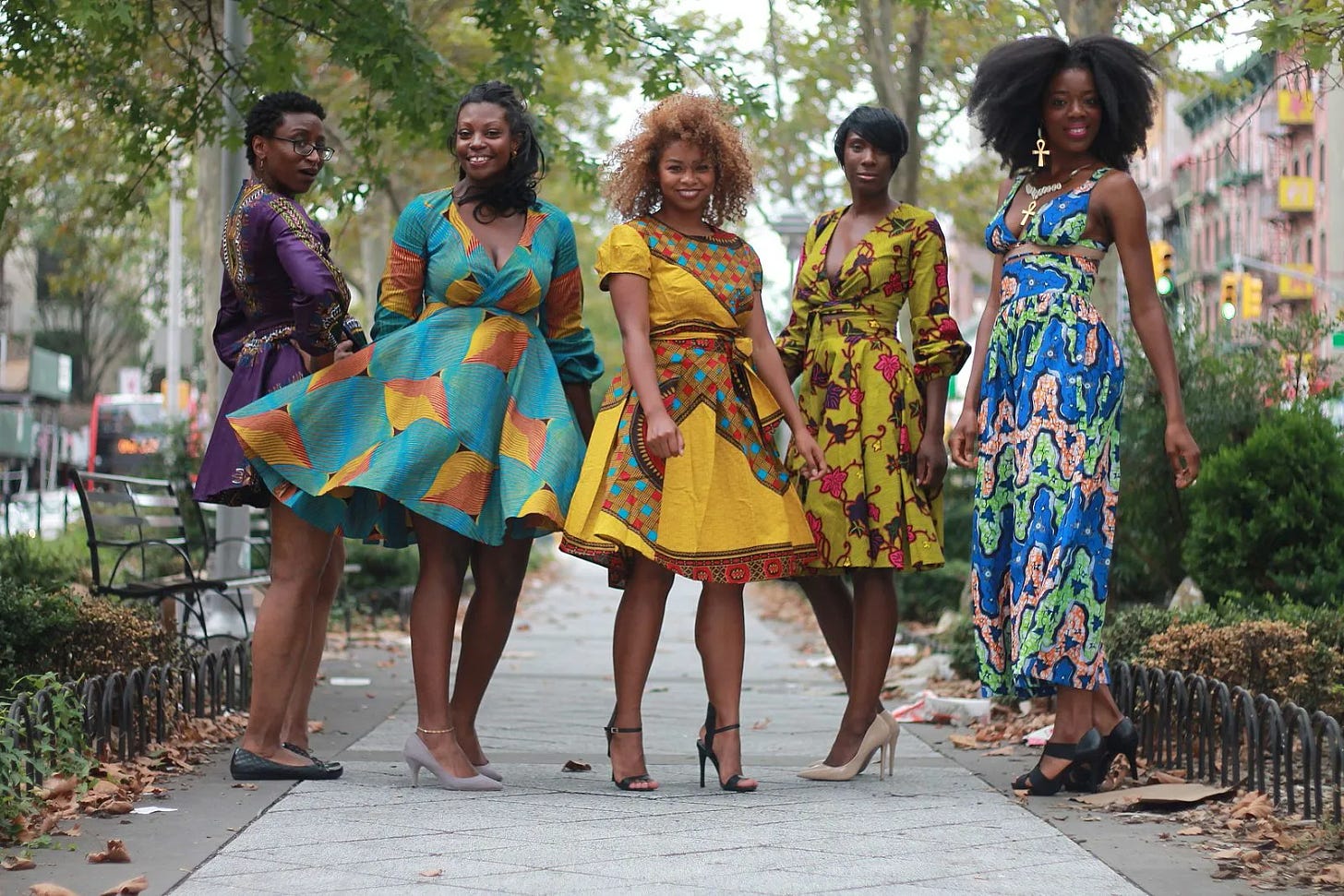How We Can Build The African Fashion Ecosystem
The African fashion industry is a significant contributor to the global fashion market. It is valued at $15.5 billion in exports annually and worth a total of $31 billion
The African fashion industry is bursting with talent, creativity, and potential.
From the runway to the streets, African fashion is making a statement.
However, despite its growth and popularity, the industry faces significant challenges, including limited access to resources, training, and markets.
To overcome these obstacles and fully realise its potential, the African fashion industry must embrace a paradigm shift - one that prioritises collaboration across all sectors and stakeholders.
That is why I am writing today. To remind us of what we need to do to take the next step.
The State of The African Fashion Industry
The African fashion industry is a significant contributor to the global fashion market.
It is valued at $15.5 billion in exports annually and worth a total of $31 billion, while the global fashion industry is estimated to be worth $2.5 trillion according to African Business
However, it still accounts for only about 1.2% of the global fashion market share.
Despite this, there is still a growing consumer trend towards African fashion, particularly among young people and the urban middle class, which makes up over 35% of the population.
With this growth and potential, the industry still faces significant challenges.
We’re faced with obstacles like limited access to financing and funding, inadequate training and skills development, limited distribution channels and market access, competition from cheap imports and counterfeit products, as well as limited branding and marketing expertise.
Access to capital remains a major barrier for African fashion entrepreneurs, hampering their ability to invest in production, expand operations, and meet growing demand.
Many struggle to secure loans or investment due to stringent lending requirements and a lack of collateral.
The shortage of structured training programs and skills development initiatives in areas like fashion design, pattern-making, and garment construction also hinders the industry's growth.
This skills gap often translates into quality control issues and limits the competitiveness of African fashion brands.
Limited distribution channels and market access pose another challenge.
A lot of designers struggle to reach potential customers beyond their local markets due to underdeveloped logistics infrastructure, complex customs procedures, and fragmented regional trade policies.
Competition from cheap imported apparel and the prevalence of counterfeit products further compounds the challenges faced by local fashion businesses, making it difficult for them to compete on price and eroding consumer confidence in African-made fashion.
Moreover, limited expertise in branding, marketing, and leveraging digital platforms restricts the ability of African fashion businesses to effectively promote their products and tap into global consumer markets.
Moving Obstacles through Collaboration
To overcome these challenges, collaboration between various stakeholders is crucial.
We all have to join forces to unlock the industry's full potential.
One key area of focus is improving access to finance for fashion entrepreneurs.
I know that initiatives like the Fashionomics Africa initiative, launched by the African Development Bank, help to provide funding, mentorship, and business development support to African designers and manufacturers but we can do more to provide partnerships an credit facilities for the industry.
To bridge the skills gap in the African fashion industry, we need to invest in more fashion design schools and structured apprenticeship programs. Quite a lot of training is informal and unstructured.
Enhancing distribution channels and market access is another priority area.
Regional economic communities and trade blocs need to harmonise policies, reduce tariffs, and speed up customs processes to make it easier to move fashion goods across borders.
On E-commerce, Pashione is working tirelessly to ensure that African fashion products are available to everyone, anywhere in the world.
It is not enough to build capacity without providing the legal framework for the industry to thrive.
Combating the proliferation of counterfeit products is important, to safeguard consumer confidence and protect the integrity of African-made fashion.
Law enforcement agencies and industry associations will have to work together to raise awareness against counterfeiting and prosecute counterfeiters.
Thanks to the Internet, we’re already making great progress in branding, marketing, and the promotion of African fashion globally.
In the past 5 years, we have had more fashion weeks, trade shows, and international exhibitions than any other time since the inception of this industry but we need more collaboration between the private and public sectors.
Final Thoughts
I am truly excited about the future prospects of the African fashion industry.
From my experiences moving around the continent, engaging with entrepreneurs, investors, artisans, and other stakeholders, there is a palpable sense of purpose and a clear understanding of the challenges that need to be addressed.
What is particularly inspiring is the collective recognition of the immense opportunity that lies before us.
The African fashion industry has the potential to be a driving force for economic growth, job creation, and cultural preservation across the continent.
But now is the time for concerted and collaborative action.
We must move beyond merely talking about the challenges and opportunities, and instead, take concrete steps to walk the path towards progress.
It is time for all stakeholders – governments, private sector, civil society, and international partners – to join hands and work in unison to elevate the African fashion industry to new heights.
We can transform this industry into a global powerhouse.
We can showcase the resilience of the African people to the world.


